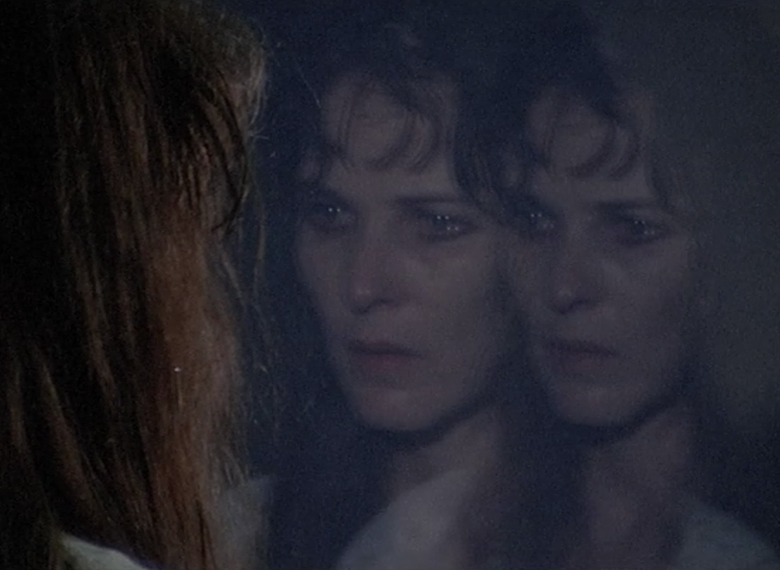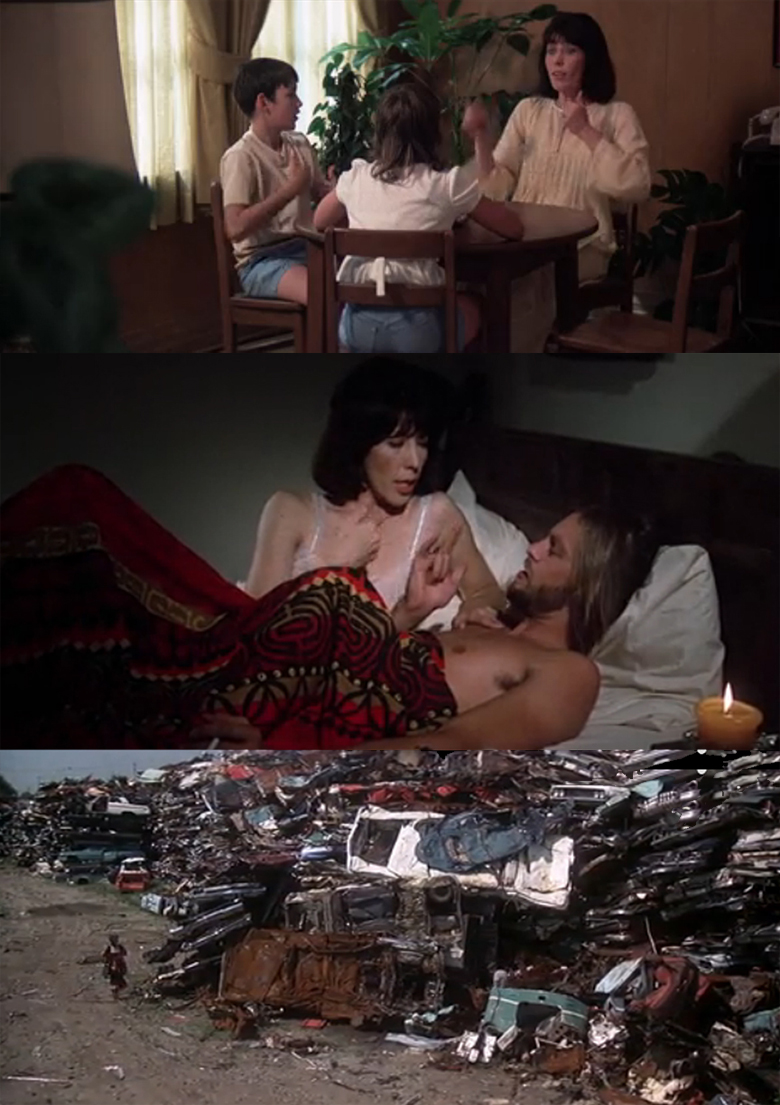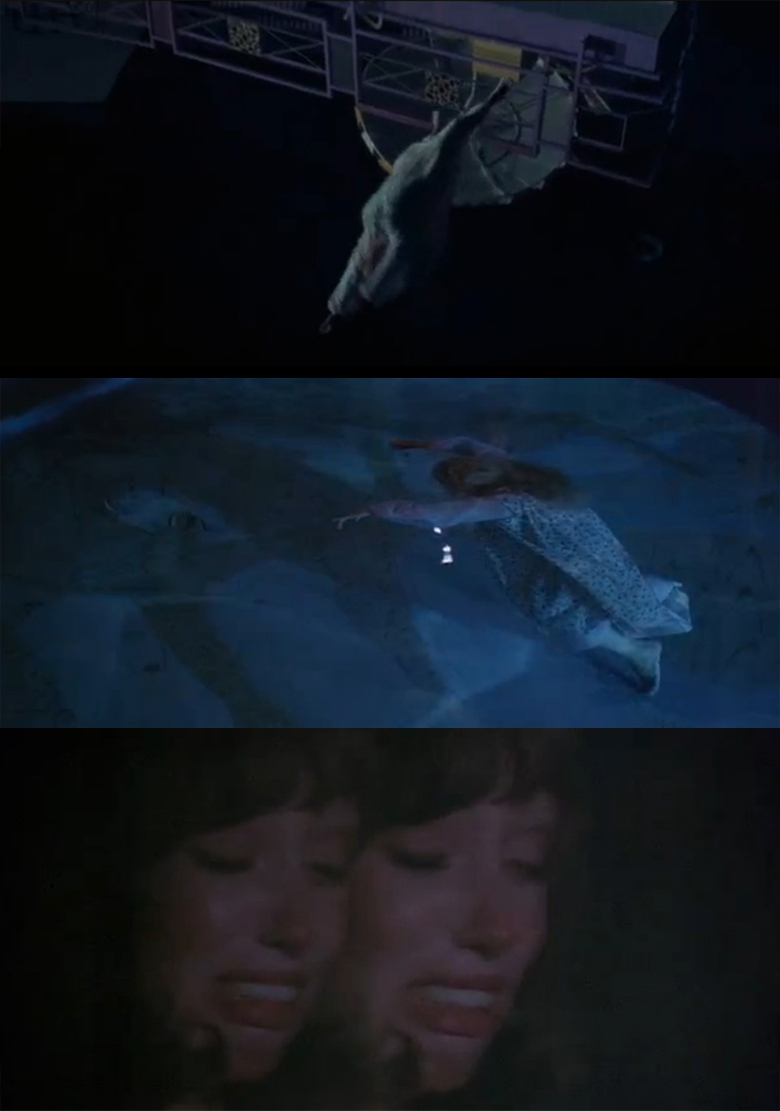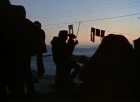Calgary Cinematheque has curated a Masters Series centred around a Robert Altman retrospective to launch their 2015/2016 season. The selected films focus on an evolving body of activity occurring between 1971—1977 and Calgary Cinematheque delivers on a thoughtful articulation of how Altman's signature style took shape during this period. The films featured from September 17th to November 5th include, in order, The Long Goodbye (1973), 3 Women (1977), Nashville (1975), Thieves Like Us (1974) and McCabe & Mrs. Miller (1971).
Stylistically, Robert Altman is renowned for ensemble casts, resisting the bounds of any one genre and for a constantly moving camera that plays venue to evolving worlds, lengthy dialogues and voyeur to emergent intimacies. Alongside lingering shots, other signature compositional techniques include framing action with pre-existing architectural structures, reflections in mirrors to inject a shift of psychological distance between characters and overlapping dialogue to create a soundscape that maintains a psychological realism for the viewer. As a newcomer to Altman's immense body of work, I was immediately struck by the curious experiential consequences of his creative executive choices. For starters, Altman's focus on characterization, married with the prolonged presence and dynamic movement of the camera, lends itself to a notable and distinct sense of how time flows. Unique textures of time have been further crafted by Altman with a compelling range of visual, audio and symbolic devices. When employed, each method simulates, prompts or conveys a different experience of time passing.
One way Altman conveys the passage of time is through a variety of habits bestowed onto the characters. Ranging from smoking, sipping colas, streams of internal dialogue spoken aloud, playing cards and habits of necessity; striking matches. In The Long Goodbye, the movie actually breathes. Private investigator Philip Marlowe (Elliott Gould) smokes almost ceaselessly and does so in a habitual pattern of striking a match anywhere, shaking the fire out and inhaling deeply. The strike of the match occurs in any situation—regardless of the stakes—and on surfaces both public and private, ranging from his home to grocery store walls to a client’s encased gun collection. This gesture, enacted with such regularity throughout the film, becomes a temporal tracking device for where Marlowe has been. It resonates as quirky, and even poetic, as it makes the nonchalant and unassuming existential claim, 'I was here'. The strike, light, shake, drag is a tempo that accompanies the narrative right until it coalesces with the ocean-bound suicide by Roger Wade (Sterling Hayden). Just as the breath of Wade becomes extinguished by water, the time signature of Marlowe's breath becomes embodied by the swelling crests of water repeatedly lapping up onto the shore with the appropriate amount of violence.
In Thieves Like Us, time initially seems to exist as a field. From the beginning, there is no discernible metronome for time passing and instead, attention is given to the development of a band of criminals and the greater historical and cultural context playing host to their robberies. The only measure of time passing is the seemingly arbitrary announcements from T-Dub (Bert Remsen) declaring the accumulative tally of banks successfully robbed. It is not until the youngest convict, Bowie (Keith Carradine), arrives at a moment of convergence between mortal danger and love that time begins to tick. After sustaining injuries to his head and torso during an automobile crash, he is rushed from the incident by fellow criminal Chicamaw (John Schuck) and brought into the adoring care of Keechie (Shelley Duvall). During the course of his recovery, Bowie and Keechie become unambiguously amorous towards each other. Altman pairs the consummation of their love with a radio play of Shakespeare’s Romeo and Juliet broadcasting at the same time. What is truly unique, is Altman's bold choice to replay the same passage from R&J each time they made love, which is no less than three times. It is so strange to experience at first that you question your own cognitive faculties before the director’s and then, you swiftly realize the poetic appropriateness of his choice. When you repeat a unit of sound or a passage over and over again, it begins to resemble something that has object permanence. The use of this audible infinite loop to suggest timelessness is only used in the instance of Bowie and Keechie's intercourse, effectively demarcating their love as the only lasting state of being in the narrative. The very next morning, Bowie gifts his beloved with a watch, to which Keechie replies, “[The] time's not right.” Appropriately, time is realigned and set to run alongside a new narrative trajectory with well-defined stakes.
One year after Thieves Like Us debuted in 1974, Altman released a massive feat of visionary and directorial skill with Nashville, a film later to be preserved in the United States National Film Registry. Nashville is a cautionary portrait of a city steeped in Western society's obsession with fame and political affluence. The film shares a border with satire, industry exposé, game show and cultural documentary. When considering Altman's body of activity, his creative prowess in aesthetic appropriation and stylization is remarkable. The world of Nashville is meticulously conjured with a wall of sound and a mass of people and is done so with immediacy. You enter Nashville in the same way you disembark a plane in a country you have only ever heard about. The experience of the city of Nashville is rendered with a continuous meditation on a larger societal structure and its interconnected agents.
The point of view offered by Altman's directorship is a passive one and decidedly does not serve as an assertive narrative force that explicitly carves out a single governing narrative. This directorial choice to reveal information as a passive observer means your attention is transferred from one subplot to another subplot through simple acts of movement: the camera pans, following the activities of one character and then switches their subject of inquiry when another character walks by. The plot constituents are the layered narratives of individual histories of being unfolding in relation to one another and in response to an unknown collective ideal. What ensues is a gradual demonstration of ambition and agenda, order and chaos, cause and effect. Altman's commitment to poetic and satirical conjuring shines through with his use of the automobile, in both its form and function, as an ongoing metaphor throughout the film. The symbolic significance of a single vehicle is carried by the empowerment of a driver with autonomous mobility and a sense of agency, all the while providing a confined area that plays host to a private symbolic space. One car denotes one agent, in one space, with unique operating capabilities. From the macroscopic perspective, masses of cars represent industry, population, the behaviours of humans regulated by order and rules and the tendency of things to move towards entropy. Using a fine-tuned choreography of absurd mass car pileups, nonsensical fender benders and a transient political van, Altman comments on human nature so convincingly that I begin to suspect that he is using cars as actual characters. This hunch is nearly confirmed by the wanderings of an ineffective but enthusiastic British reporter named Opal (Geraldine Chaplin), when she paces through a towering junkyard of expired cars and attributes their rust to dried blood.
What is additionally enriching for any cultural discourse is how Altman dissolves the boundaries of private and public spaces throughout the film. In the aforementioned mass pile up, Nashville celebrities find themselves in gridlock traffic and subject to continuous approaches from an overbearing public. The window-less vehicle provided no physical division of public and private spatial dimensions and promoted a socially equalizing scenario in conjunction with the nondiscriminatory traffic jam. Another key social equalizer is represented by the hospital that is housing country singer icon Barbara Jean (Ronee Blakley). While health issues do not discriminate between classes, ethnicities and celebrity status, the private matter may come to concern a following public. Intertextual references to fame that blurred the line between public and private figures are made with Elliott Gould and Julie Christie (of real-life Altman fame) making cameos in the film as their famous selves. In a multitude of other examples, a politician enters the hotel room of touring married folk stars, interrupting their private conflict and contributing to the consequence mess. An aspiring singer is unexpectedly prompted to strip in a room full of men. A troubled young man cannot carry out a phone call with his mother without a roommate walking into his room. There are minimal instances where there is a sole person in a room.
Even mediations on the significance of internal and external spaces are layered in with the wrenchingly poetic family situation of the Reese's. Linnea Reese (Lily Tomlin) is a prominent and highly respected gospel singer that is also mother to two deaf boys. The most astonishing sense of intimacy emerges when you enter her home and play witness to Linnea signing with her sons about their day at school. The challenge to conceive of a more private symbolic space than that of a young child who cannot experience sound and will never hear his mother sing is profound. As is the heartache when Linnea gives into the sexual persistence of rockstar Tom Frank (Keith Carradine) and teaches him different ways to say 'I Love You' in sign language, only to have him reduce the prospect of meaningful human connection by dialling another sexual interest while she is still in the room.
Altman's relentless use of many people with many stories, in the stories of many other people, with little divide between the public and private, internal and external results in an immense layering effect. We see Characters A and B in the audience of Character E, while Character D pursues the likes of Character F who is married to Character G who walked by Character A in scene one. Altman's use of simultaneity in this way shows how we are all happening at the same time. This demonstration of our inherent connectedness by virtue of being social beings, reveals the power of music and politics. Both activities serve as multi-faceted avenues for synchronized intent and we actively observe how individual agents can become a unified structure. The final magnetic scene in Nashville best exemplifies what ought to be a musical and political promise of unification.
Altman's interest in dissolving boundaries seems to surpass symbolic social act and manifests as full on twinning in 3 Women. From the beginning, character introductions of identical twins Peggy and Polly (Leslie Ann Hudson, Patricia Ann Hudson), Edgar the stunt double (Robert Fortier), Millie (Shelley Duvall), and the mirrored equivalent of her name, Willie (Janice Rule), set a strong precedence for psychological inquiry. Altman does not miss an opportunity to use the visual mechanics of mirrors, shared clothing and the reflective qualities of water as a means of further exploring a conceptual twinning. Unnerving behavioural mimicry, identity theft, adoption of personal tastes and immersion into private space is gradually folded into the character development of Pinky (Sissy Spacek).
Each time you speak, you clock the origin of the stirring, the idea and the sound as inside of your own person.
There is also the mysterious peripheral presence of Willie, a pregnant artist harnessing the strong symbolic embodiment of creation who comes to play the unknowing facilitator of Pinky's coalescence with Millie's personality. Willie's paintings explore the passionate and primitive interrelations among creatures and adorn the bottom of the pool that is enclosed by the apartment complex that Millie and Pinky reside in. The pool is an ominous and irresistible presence throughout the film and it is not until the surface tension of this water is broken by a fateful leap of Pinky that the three woman become inextricably entangled with one another. This event instigates a thorough investigation of cycles of birth and death, transience and permanence, all in relation to the Self. The narrative is riddled with existential anxiety. During a car ride, Pinky expresses curiosity about their identical twin coworkers to Millie, “Do you think they know which one they are?"—a poignant question for the story of 3 Women. How does your personal identity resist dissolution? In part, I think it is language. The conceptualization of Self in contrast with Other is reinforced by a daily process of narrating your own existence. Each time you speak, you clock the origin of the stirring, the idea and the sound as inside of your own person. Millie's constant stream of dialogue, ever present throughout the film, injects a palpable conceptual and physical distance from other human beings. By using language, she reinforces and projects her own identity, articulating the distance that exists between her Self and an Other. By the end, Millie speaks sparingly.
3 Women demonstrates how Altman's creative development has arrived at an apt capability to eloquently explore more complex and stranger aspects of human nature by 1977. McCabe & Mrs. Miller (1971) is Altman's earliest film in Calgary Cinematheque's curation and is featured last in the series. It is a compelling programming choice as it explicitly demonstrates a notable contrast in stylistic execution and linear narrative structures during his seven-year long artistic evolution. Of all the featured films, McCabe & Mrs. Miller is perhaps the most predictable and easily digestible for a mainstream viewing audience. It explores human negotiations between business and intimacy, cutthroat capitalism and erotic enterprise, community and industry. What is most thrilling is seeing hints of Altman's distinct authorship begin to emerge. For instance, Altman selects Leonard Cohen as the singular voice for the film’s soundtrack and successfully reinforces the fact that each character and their interrelationships belong in the same world. Two years later, in a similar aesthetic dimension, Altman uses a single song performed by a multitude of artists as the soundtrack for The Long Goodbye. In McCabe & Mrs. Miller, his insistence on profound symbolism manifests as an unfinished church burning in a town sustained by the psychological counsel of saloons, brothels and drink. His devotion to character development gives rise to memorable portrayals and the first signs of his trademark stream of vocalized internal dialogue. His signature mobile, lingering point of view becomes discernible and affords the viewers a level of perceived intimacy with the narrative, as if they have been rendered as active participant.
Upon further review of distinct narrative techniques in Altman's work, I observed how in each film of the Master Series, Altman employs a singular sonic device in the narrative trajectory that is so startling it punctuates space and time, uprooting the resonating tone of the film. It ruptures the comfort of the viewing audience and yields to a plot twisting and moving towards its entropic conclusion. In Nashville, the threshold of the viewer’s acoustic faculties is rendered defenceless during a critical race car event. The overwhelming and aggressive sounds of roaring engines extinguish the melodies of the musical acts on the main stage and effectively set an uncomfortable and foreboding mood. In 3 Women, the plot takes an unsettling psychological turn towards death when a gun is shot. In Thieves Like Us, a strong sense of borrowed time is introduced when Bowie abruptly smashes head on into another car. In McCabe & Mrs. Miller, a striking silence is felt as the mournful voices of the townsfolk are unified in song during the funeral of a fellow member of their community. In The Long Goodbye, the heinous act of smashing a cola bottle across the face of a woman would send any investigator into high gear. At the conclusion of the Master Series, I'd say Calgary Cinematheque starts their season off with a bang.





